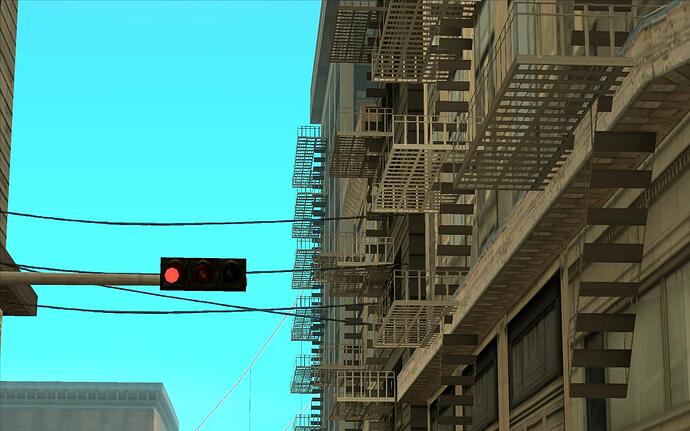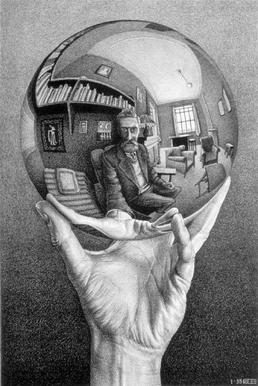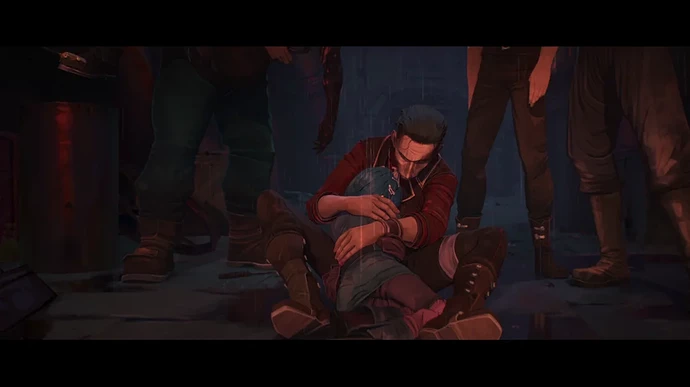From my obervation, it appears as if 3d CGI, by and large, as a form of visual art, seems to have a clear tencency towards a certain sterility and lifelessness.
Of course it has such a tendency. Computer Generated Images are composed of a complex but very structured programs that are themselves made out of complex pure mathematical/cybernetic rules and laws.
Even our randomness generator programs produce surprisingly uniform values which seems contrary to the intuitive understanding of noise and variation but you will be (rightfully) corrected that in fact this is the expected and correct behavior of such programs since they in effect are made to implement certain mathematical equations. It is hard(but possible) to overcome this inherit nature of CGI. (which in truth is not even desirable as some of the best examples of 3d art ive seen instead embrace purity, sterility and precision of computers and end up being far more expressive)
Specifically your comparison images: renders are made with the usage of precise psychically based renderers that are biased towards “photo-realism” while paintings do not care about realism at all and focus on expressiveness
Is it a shortage of available (premade) character assets?
Yes its both lack of assets and tooling.
Specifically in the case of your pictures we lack suitable universal(as in cross-platform and non-proprietary) environment/plant/prop generation software as well as good human/animal generation software and no suitable NPR software. All of these problems are thankfully being tackled on by our engineers. To ask an artist to create a scene of such complexity from scratch in 3d is ridiculous. (Even your revered Davincis used various tricks to get their paintings done faster.)
For example:
Why is there so many (good) tf2 Gmod animations than anything else? why would ANYONE in their right mind ever decide to use an fps game that has absolutely no 3d animation tooling as an 3d animation platform? and not use something like lets say Maya? But when you realize that Gmod costs 10 bucks and that its interface is far simpler and more intuitive, comes pre-loaded with ready made configurable assets of wide variety and (relative) quality question will be turned on its head: why would ANYONE ever pay thousands for a software with primitive and un-elegant tooling where you have to manually poly model, rig, texture and shade a character and then animate it with its clunky massively over engineered interface with default grayscale viewport rendering compared to real-time WYSIWG gmod “viewport”?
This massive overhead of so called “professional” and “real” 3d software is not a feature its a bug caused by the youth of the field and its accompanying lack of established good abstractions for manipulation and visualization of 3d space.(This causes overspecialization and departmentalization which in turn reinforces software producers to continue producing their clunky primitive software. Final result of this perpetual feedback loop is stumped artistic development of 3D/CGI as a field)
This is from the preface of the book “Fundamentals of Computer Graphics”
The cover image is from Tiger in the Water by J. W. Baker (brushed and air-brushed acrylic on canvas, 16” by 20”, www.jwbart.com).
The subject of a tiger is a reference to a wonderful talk given by Alain Fournier
(1943–2000) at a workshop at Cornell University in 1998. His talk was an evoca-
tive verbal description of the movements of a tiger. He summarized his point:
Even though modelling and rendering in computer graphics have
been improved tremendously in the past 35 years, we are still not
at the point where we can model automatically a tiger swimming in
the river in all its glorious details. By automatically I mean in a way
that does not need careful manual tweaking by an artist/expert.
The bad news is that we have still a long way to go.
The good news is that we have still a long way to go.
With things like PBR, Texture painting, Sculpting, Non techincal CAD-like non destructive modelling, Realtime rendered viewports and node based systems, open source tooling, open standards, unification of APIs and so on we are slowly getting there.
The goal is make so that CGI artists could create as easily and as expressively as picasso could paint! Only then can we truly realize full unexplored potential of CGI!
Creation and development of open source and free software is paramount for this goal if we didnt vote for Bush we would’ve been on mars already and if Houdini wasn’t proprietary we would’ve been a galaxy fairing civilization.
Proprietary software hinders development of standards, prolonging standard wars, fractures CGI community and obviously slows future CGI developments by intentionally obscuring certain novel concepts forcing industry to reinvent the wheel 15 times in a row.
And of course cost of a guashe paint and bruses is inconvenience. Cost of a CUDA computer and a Modo license is your living.
Consider this: probably 50% of all 3d CGI tutors in gnomons catalog started out in CG with pirated software; Vast majority(if not all) internets artistic output came from pirated software and certain entire countries entertainment industry and cultural landscape is entirely dependent on pirated software (there is no one in lets say poland who can afford a 3ds license therefore there is no way for a country to naturally produce artists of needed volume and quality without pirated software)
What I mean is there is no storytelling to digital art, if we talk still images, especially if we talk 3d stills.
Nonsense. I believe that there tons of our own Michelangelos that we simply dont appreciate now just like how no one appreciated these “frutiger areo” types in the past and i believe that 3D and CGI in general far surpasses anything traditional. We simply havent seen anything yet
Are artists just so overexposed to postmodernistic popcultural klischees, it wouldn’t occur to them to make an artwork about,- say the assasination of Julius Caesar - unless they’d seen that in a Netflix series the week before?
Painting about assasination of Julius Caesar is precicely the type of postmodernistic popcultural cliche gruel that modern day artists would make for instagram/artstation likes. We are in 21st century not in renaissance, Roman and Greek dramas/myths do not have the same cultural power as they did back then(Do not be under the impression that we no longer communicate the underlying morals and myths outlined in Julius Caesars assassination though. We do. But under a different guise more fitting to our modern social political media landscape)







